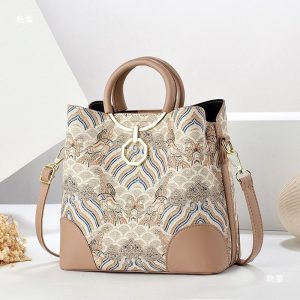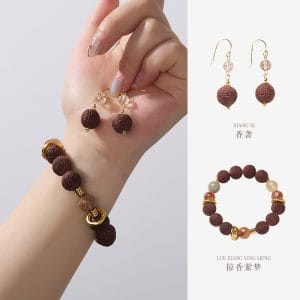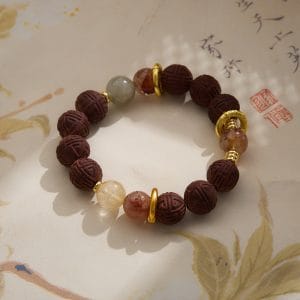The Historical Roots of Chinese Embroidery
Chinese embroidery, known as “ci xiu” in Mandarin, is an ancient craft that dates back over 2,000 years, with its origins deeply embedded in the cultural and artistic traditions of China. Initially developed during the Shang and Zhou dynasties, it began as a practical means to decorate clothing and household items, but quickly evolved into a highly respected art form. The Silk Road played a pivotal role in spreading Chinese embroidery techniques and motifs across Asia and beyond, influencing textile arts globally. Embroiderers often drew inspiration from nature, mythology, and daily life, creating pieces that were not only beautiful but also symbolic, conveying wishes for prosperity, longevity, and happiness. This historical foundation has allowed Chinese embroidery to endure through centuries, adapting to changing times while preserving its core essence.

Techniques and Regional Styles
Chinese embroidery is characterized by its diverse techniques and regional variations, each with distinct characteristics. The four major schools—Suzhou, Hunan, Guangdong, and Sichuan—are renowned for their unique styles. Suzhou embroidery, for instance, is celebrated for its fine, delicate stitches and realistic depictions of landscapes and figures, often using silk threads on satin. In contrast, Hunan embroidery emphasizes bold colors and strong contrasts, frequently incorporating woolen threads for a textured effect. Guangdong embroidery, or Yue Xiu, is known for its gold and silver threadwork, creating luminous pieces that shimmer with light, while Sichuan embroidery excels in intricate patterns and three-dimensional effects. Mastery of these techniques requires years of apprenticeship, as artisans learn to manipulate threads with precision, blending colors seamlessly and creating depth through varying stitch lengths and densities.
According to a recent study by the China National Silk Museum (2023), contemporary Chinese embroidery has seen a resurgence in popularity, with a 15% increase in domestic appreciation and international exhibitions over the past five years. The study highlights how digital platforms and social media have enabled younger generations to engage with this traditional art, leading to innovative fusion pieces that combine ancient methods with modern themes. This revitalization is not just about preservation but also about adaptation, as embroiderers experiment with new materials and subjects, ensuring the craft remains relevant in a fast-paced world.
Beyond the technical aspects, Chinese embroidery is deeply intertwined with cultural symbolism. Common motifs include dragons, representing power and good fortune; phoenixes, symbolizing grace and renewal; and peonies, denoting wealth and honor. These elements are often combined in narrative scenes that tell stories from folklore or history, making each piece a visual tapestry of Chinese values and beliefs. The choice of colors is equally significant, with red symbolizing joy and celebration, gold indicating wealth, and blue representing immortality. This symbolic language allows embroidery to serve as a medium for communication, expressing emotions and aspirations without words.
The process of creating a piece of Chinese embroidery is meticulous and time-consuming, often taking months or even years for large works. It begins with designing the pattern on paper or directly on the fabric, followed by selecting the appropriate threads—typically silk, but sometimes cotton or metallic threads for special effects. Artisans then work with needles as fine as hairs, employing stitches such as the satin stitch for smooth surfaces or the seed stitch for texture. Attention to detail is paramount, as even the slightest error can disrupt the harmony of the piece. This dedication to craftsmanship reflects a broader cultural emphasis on patience, precision, and the pursuit of perfection.
In modern times, Chinese embroidery faces challenges such as the decline in skilled artisans and competition from machine-made imitations. However, efforts are underway to sustain the tradition through government support, educational programs, and collaborations with fashion designers and artists. Initiatives like the Intangible Cultural Heritage protection laws in China have helped safeguard these techniques, while contemporary embroiderers are pushing boundaries by incorporating themes like environmental conservation and social issues into their work. This balance between tradition and innovation ensures that Chinese embroidery continues to evolve, captivating audiences worldwide.
Ultimately, Chinese embroidery is more than just a decorative art; it is a living heritage that connects past and present. Its ability to tell stories, convey emotions, and reflect cultural identity makes it a timeless treasure. Whether admired in museums, worn as fashion, or created in workshops, each stitch carries the weight of history and the promise of creativity, inviting us to appreciate the beauty woven by human hands.
You May Also Like
The Palace Museum Paper-Cut Light Art Fridge Magnets: Chinese Cultural Style Creative Gift Series
Price range: $27.00 through $36.00 Select options This product has multiple variants. The options may be chosen on the product page- handmade-tote-ethnic-boho-large-capacity-shoulder-bag/" class="woocommerce-LoopProduct-link woocommerce-loop-product__link">Add to cart


Guangxi Zhuang Brocade Handmade Tote – Ethnic Boho Large-Capacity Shoulder Bag
Original price was: $172.00.$150.00Current price is: $150.00. Add to cart Ancient Craftsmanship & ICH Herbal Beads Bracelet with Yellow Citrine & Silver Filigree Cloud-Patterned Luck-Boosting Beads
Original price was: $128.00.$89.00Current price is: $89.00. Add to cartAncient Craft Herbal Scented Bead Bracelet with Gold Rutile Quartz, Paired with Sterling Silver (925) Hook Earrings
Original price was: $322.00.$198.00Current price is: $198.00. Add to cart






